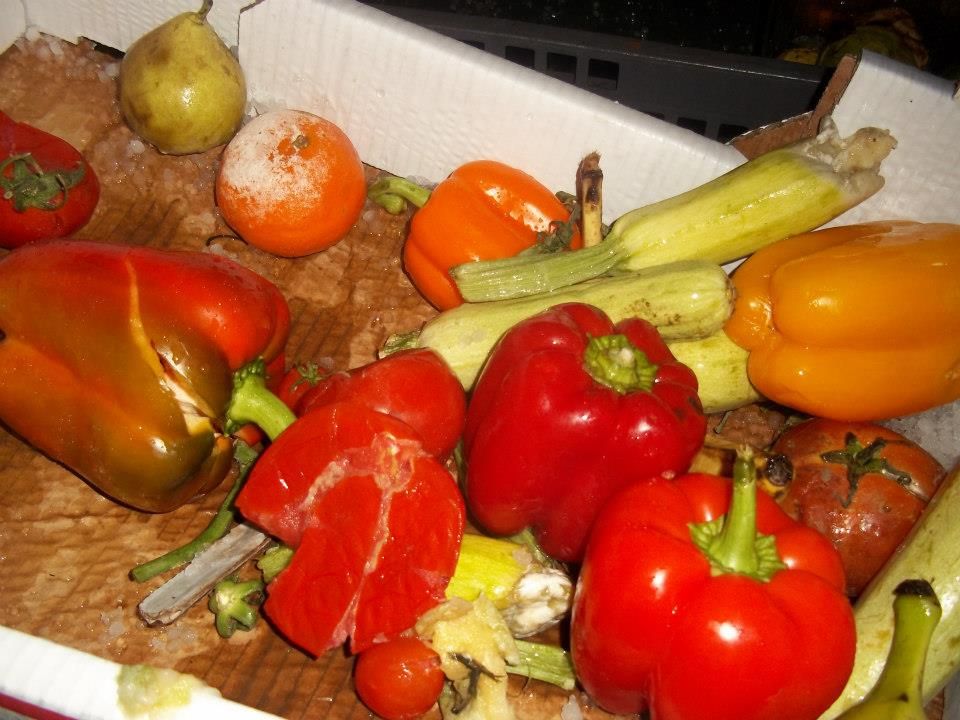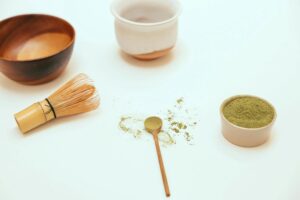 I’ve wanted to write this post for a little while already, because I think it may be very useful information for those either looking to save money or reduce waste, or both. But I haven’t written it yet, because it’s not “politically correct” and I know some people might get upset at me for writing it, because it’s not what conventional papers and studies will tell you to do. And I have no scientific backing for anything I’m writing.
I’ve wanted to write this post for a little while already, because I think it may be very useful information for those either looking to save money or reduce waste, or both. But I haven’t written it yet, because it’s not “politically correct” and I know some people might get upset at me for writing it, because it’s not what conventional papers and studies will tell you to do. And I have no scientific backing for anything I’m writing.
So you have to make your own decision whether or not you’re comfortable doing these things…
But basically, these are the guidelines I use when deciding whether or not vegetables and fruit are salvageable and can be eaten.
This is something that is especially useful for me, because I have access to lots of free produce in sub par conditions (the rejects from my local mom and pop’s store), as well as reduced rack veggies and fruit from the grocery store. I also sometimes forget stuff in my refrigerator until they no longer look so hot…
And while there is plenty of great stuff there, you have to know how to utilize it properly, as well as knowing what to toss, so you don’t make yourself sick, not to mention make your food taste gross.
Here are my basic rules, and then I’ll go through each individual type of produce, sharing what I do with them.
Rules for Salvaging Produce
- Avoid mold. If it’s hairy, chuck it. If its fuzzy, chuck it. If it’s white, chuck it. If it’s blue, chuck it. If it looks like mold in any way, or is any strange color, throw it out.
- Avoid slime. If something is slimy or disintegrates beneath your fingers, you do not want to be eating it.
- Check for smells. If it smells off, chuck it.
- Wash it very well! While washing produce is always a good idea, if you’re using salvaged produce, they likely touched some very nasty stuff. Wash better than you wash anything else!
- Dry stuff are better. Wet things, like tomatoes and citrus are more problematic than dryer fruit and veggies.
- When it doubt, cook it.
How to Salvage Veggies:
Greens- Including Parsley, Cilantro, Celery Leaves, Lettuce, Spinach, Kale, Swiss Chard, Etc,,,
- Wilting is not a problem. Greens wilt quickly. While they don’t look as hot, they’re totally fine even if they’re limp.
- Don’t eat black or brown or yellow bits. Go over the greens and pick out anything that looks fishy.
- Slime is one of the biggest problems when it comes to greens. Wash off very well in soapy water, and pick out all the slimy parts. If there is any slime, even after removing slimy parts, it’s best to cook whatever greens remain before using.
- These are totally fine even if they’re limp and no longer crisp. Use as you would normally.
- Turnips, kohlrabi, and radishes get bitter quickly when old. Taste a little bit to check if they’re still palatable before using them in a recipe. I tend to find turnips get bitter fast, and usually end up tossing them if they weren’t used right away.
- If there are any moldy or weird looking parts, cut out the weird looking parts along with an extra centimeter or so all around, and use the rest.
- These usually last a long time, but when they rot, they wreak to high heavens.
- Limp and wrinkled potatoes are fine.
- Remove all eyes before eating, including and especially eyes that have begun to sprout.
- Remove all black or dark brown stuff.
- If the potatoes are mushy or slimy in any way, or smell bad, toss them.
- If you see anything remotely suspicious or weird looking on the outside, cut the potato open and check to see if that weird part looks weird on the inside as well. If it does, cut out any part that isn’t regular potato white.
- These may last a long time, but when they spoil, they get mushy and slimy quickly. If there is any part that is mushy or slimy, cut out any part that feels soft to the touch, plus another centimeter or so around it.
- Cut out any black spots.
- Wilted and wrinkly peppers are fine.
- Cut out any black or soft spots.
- Check the insides of the peppers also to make sure they’re ok also on the inside.
- Because of their high moisture content, tomatoes are more tricky to salvage, and ideally should always be cooked when salvaged, unless they’re just a little wilted and limp.
- If the skin of the tomato is cracked, smell it to make sure it smells normal. If it smells strange in any way, toss it.
- Cut out any black spots on the tomato. If the black continues in further than just the top layer of skin, cut out all the black parts on the inside as well. Ideally toss the whole segment of the tomato (each tomato has about 3-4 segments inside) that had a damaged part.
- If there are any slimy parts, cut them out.
- Brown spots, also on the surface, and also within the eggplant, are ok.
- If it’s wilted, that’s totally ok.
- If the cabbage is wilted, that’s fine, and can still be used.
- If the cabbage leaves are black or look funny in any way, peel off those leaves until you get to a better looking layer beneath.
- If the cabbage is cut, and there is black along the edges where it was cut, cut off the black parts, along with an extra centimeter or so, and then use the rest.
- Greens that grow from the top of the onion can be saved, and used in place of scallions/green onions in recipes.
- Peel the onion. Toss any layers of the onion that are mushy or soft or slimy. Other layers can be eaten, but should be washed off before using.
- If there is any black sooty type substance on the onion layers, wash them off very well.
- If there is any hard/fibrous part on the inside of the onion, remove it and toss.
- Any slimy parts should be chopped off; the rest can be used.
- If the peels of zucchini or other summer squash are slimy, peel, and then use the rest. Ideally peel really old zucchinis, otherwise they’ll be bitter. (The skin gets more bitter with age.)
- Chop off any black, brown, or mushy sections.
- If they’re wilted, they’re still usable.
- If they’re slimy or moldy, try peeling them. If they’re still slimy or funky looking after being peeled, toss. But if they look normal once peeled, I’d use them.
- Cut off any weird looking spots.
- Wilted string beans are fine.
- Toss any slimy parts.
- Cut out and toss any black sections.
- Wilted cauliflower is fine.
- Often there are black or brown speckles on the top of the florets. Cut off the spots with a knife, and use the rest.
- Cut off any moldy or mushy parts. Use the rest.
- If they’re dried out somewhat, or limp, they’re ok.
- If they’re slimy, toss!
- Bruised or light brown mushy spots are ok- they’re sweeter but slimy is not.
- Black or dark brown sections should be cut off and the inside inspected. If the black/brown continues further inward, cut out the black/brown section, and use the rest.
- Brown or black and mushy bananas are fine, so long as the banana is completely closed.
- If the banana is opened or has the peel split at all, cut off any weird looking parts, and use the rest only in cooking.
- Cut off any moldy parts.
- Wrinkly citrus are fine.
- Dried out peels are totally fine.
- If any part of the citrus is moldy or mushy, toss the whole entire thing.
- Toss any moldy grapes.
- Toss any grapes that are brown or black.
- Wash off any grapes very well that have black powder sprinkled on them.
- Wilted grapes that are complete and smell normal are ok. Wilted grapes that are split should be tossed.
- Toss any grapes that are mushy.
- Wilted or soft/mushy is ok, so long as the inside isnt black/brown.
- Cut out any black/brown spots, and use the rest.
- Peel the melon. See what it is like on the inside, under the peel. If its normal under the peel, use as normal.
- If slimy under the peel, cut out the slimy parts and toss; use the rest.
- If mushy but not slimy, and smells normal, use as you would otherwise.
- If the inside of the melon is mealy, use it for cooking.
- Use mushy persimmons, even if they’re so soft that they’re liquidy.
- Toss moldy persimmons.
- Mushy/limpy kiwis are fine, so long as they smell normal.
- Cut out any mushy sections.
- Cut out any sections with mold or mushy seeds on the inside; use the rest.





0 Responses
Thank you so much for sharing this! I work with a group that regularly salvages grocery store and restaurant produce in order to share large scale vegetarian meals with the homeless people in our community (as well as to reduce food waste in general). I am very grateful to find tips like this because I'm pretty new to the whole process, but I'm also so happy to see that other people are dedicated to reducing waste as well!
Soak wilted greens in cold water. Use your sink or a large bowl. This will refresh most of the greens. Drain, and use as normal.
Soak wilted greens in cold water. Use your sink or a large bowl. This will refresh most of the greens. Drain, and use as normal.
My fresh green beans felt slimy after a few days. I sorted out the mushy and blanched the rest in boiling water for a minute or two. I then cooled them with cold water. I trimmed the ends and discarded any that were squishy or broken opened. I then dried them with a paper towel and sauted on medium high heat in olive oil. Now would be the time to add spices. I didn't. After some were nearly crispy black and others still bright green I added salt and ate them! They were delicious; my favorite were the crispy ones. LOL
Just opened a bag of fresh green beans and they were a little slimy. I put them i a colander, washed them and they are fine! Great article!
Just opened a bag of fresh green beans and they were a little slimy. I put them i a colander, washed them and they are fine! Great article!